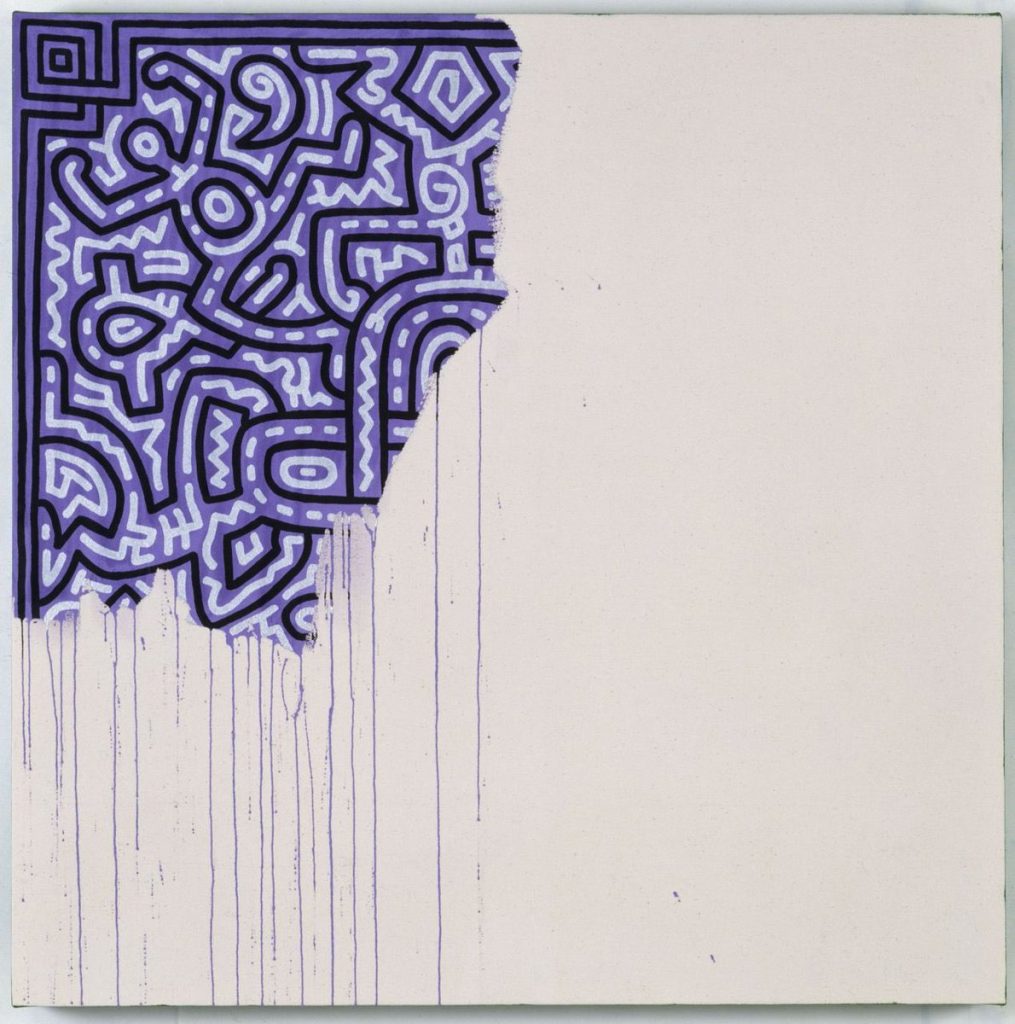A Poignant Social Commentary
Keith Haring‘s “Unfinished Painting” stands as a poignant social commentary on the devastating AIDS crisis that claimed the lives of many, including the artist himself, in the gay community. The almost entirely white canvas, with vibrant figures in Haring’s signature style adorning the right corner, is a powerful symbol of the struggles and losses during that era.
AI Intervention Sparks Outrage
Years later, a social media user decided to take matters into their own hands, using artificial intelligence to “complete” Haring’s iconic piece. This move, however, sparked outrage within the artistic community, igniting a heated debate about the ethics of using AI to alter and complete a deceased artist’s work.
A Sad Story Unveiled
The tragic narrative behind Haring’s painting, with his untimely death in 1990 at the age of 31 from AIDS-related complications, added a layer of sensitivity to the controversy. The original artwork, featuring colourful figures and streaks of paint running down from the corner, became a symbol of both artistic brilliance and the pain of an era.
The Viral AI Treatment
The controversy unfolded when a social media user, known as Donnel, decided to give Haring’s piece the AI treatment, filling the original white space with additional purple and white figures. With the caption, “Now using AI we can complete what he couldn’t finish!” the post quickly went viral, leading to a storm of backlash and criticism.
The story behind this painting is so sad! ?
Now using AI we can complete what he couldn't finish! ❤️ https://t.co/RuASoTfFdk pic.twitter.com/uAwM6SBUGW— Donnel (@DonnelVillager) December 31, 2023
Swift Backlash and Ethical Concerns
The reaction to Donnel’s AI-generated rendition was swift and unforgiving. Online voices argued that using AI to complete a late artist’s work is inherently unethical, challenging the very essence and meaning of the original piece. Critics labeled the post a strong argument against the use of AI in the realm of art.
AI Art’s Ethical Quandary
The incident has become a flashpoint in the ongoing debate among artists regarding the ethical considerations of creating art with AI, especially when using someone else’s original work. Generative AI, which empowers programs to create text or images based on prompts, has become increasingly accessible, raising concerns about consent, plagiarism, and fair compensation.
Artists Speak Out
Prominent artists, including Brooke Peachley and Megan Ruiz, expressed their disdain for the AI treatment of Haring’s work. Ruiz, in particular, emphasised how generative AI models are often trained on existing artworks without proper consent, leading to concerns about the legitimacy of the creative process.
The Larger Debate: AI as Art
The controversy surrounding Haring’s “Unfinished Painting” has reignited the broader debate about whether AI-generated art can be considered true artistic expression. While some argue that it represents a departure from human creativity, others see it as a powerful tool with the potential for innovation.
In the end, the intersection of AI and art raises complex questions about ethics, respect for original creations, and the future role of technology in shaping the artistic landscape. The debate continues, with artists and art enthusiasts grappling with the implications of AI interventions in the world of creativity.





